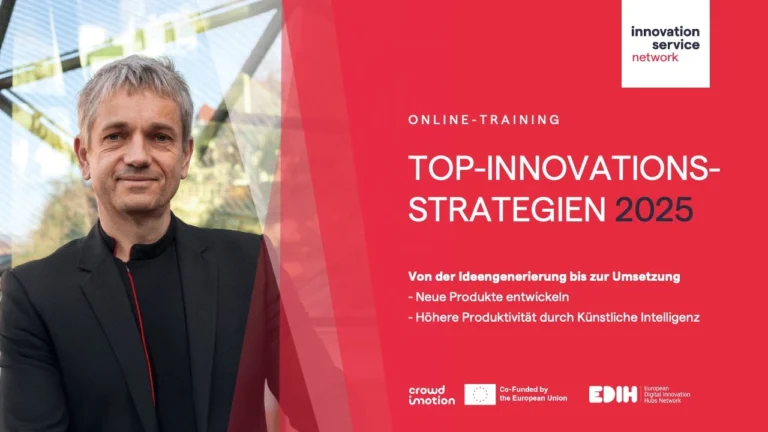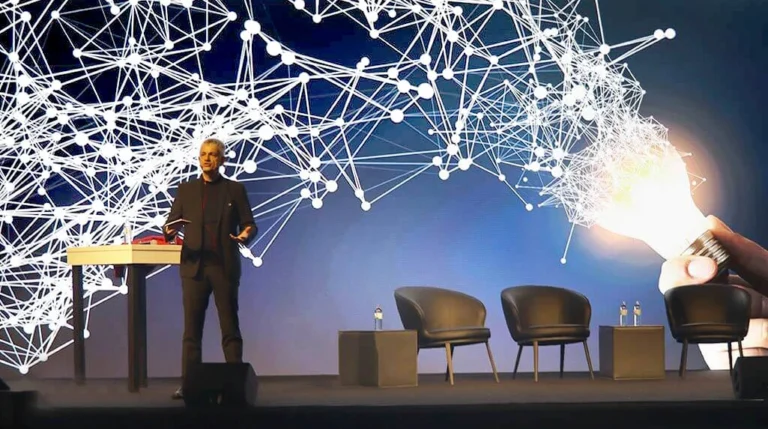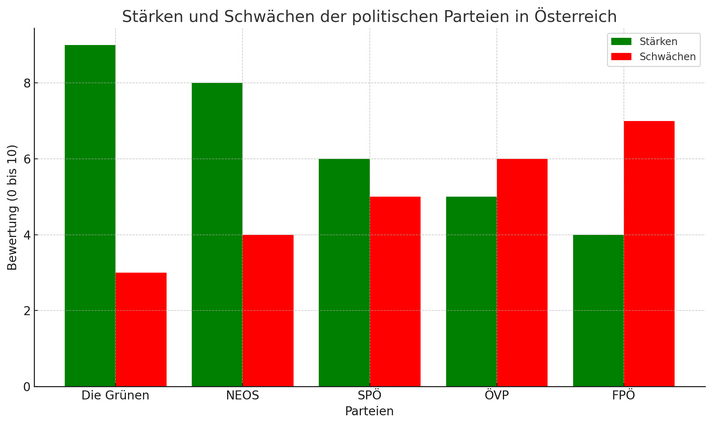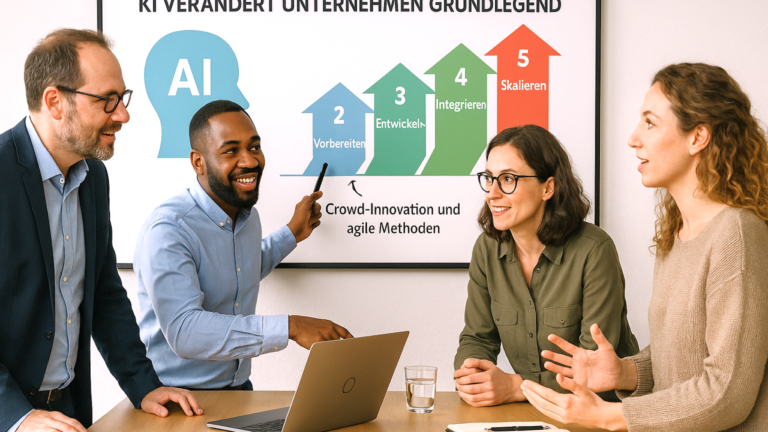
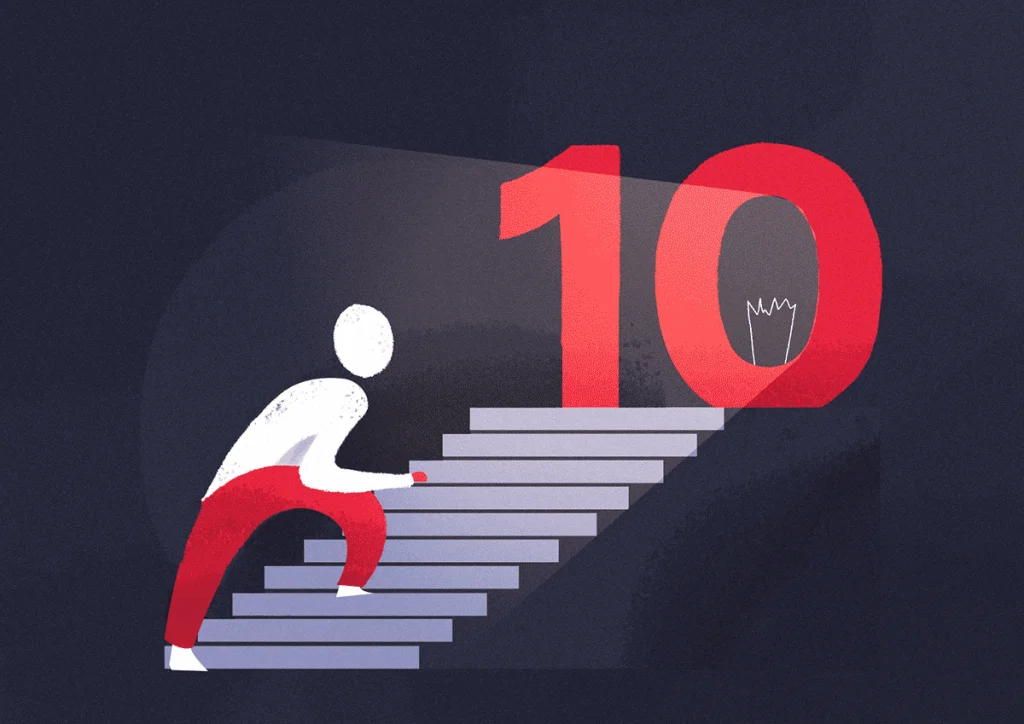
In 10 steps to an innovative company
An innovation process, especially at the beginning, consists of many iterations, improvements, new ideas and thoughts that are spun on. Here it is important not to have any "innovation killers" that extinguish ideas in the creation phase. Innovations must be reflected, communicated and co-developed through feedback loops across company hierarchies and divisions. This works particularly well in networks without hierarchies.
Anchoring innovation as a process in the company also creates an attraction for employees. More and more people are interested in the future viability of their company and are willing to get involved. Regardless of whether internal innovation management or open innovation strategies are used, innovation needs a process logic that provides orientation for all participants. There are different process models, which usually only differ in the number of process steps and decision nodes. In any case, innovation managers are well advised to divide the "big picture" into smaller sections in order to obtain plannable work packages. In the simplest case, an innovation goes through five stages, sometimes only four:
In many companies, the focus of idea generation and idea development is on increasing efficiency. Especially in management-led companies, savings through the "company suggestion scheme" are popular because it is easy to measure the effect. This becomes more difficult with new solutions and new business areas. Here, depending on the life cycle of the solution, patience is required until an idea pays off as an innovation in its realization. A wide variety of creativity methods can be used for systematic idea generation. These methods are based on the basic creativity mechanics of "brainstorming" or "brainwriting" or are variations of them. The aim is to generate a creative arc of tension that generates leaps of thought and thus leads to new solutions. If an open innovation strategy is pursued, lead users and customers are involved from the very beginning in order to reduce the risk of misdevelopment.
Before an idea reaches this stage, it ideally passes through a strategic filter (with the exception of CIP, where an RoI consideration is usually made). The strategic question is: Does the idea have the potential to support the corporate strategy? This is to prevent the company from losing focus. This is particularly important for niche strategies. It is now also a matter of planning the implementation of the idea as an innovation project and also thinking about resources. An initial rough business plan and a feasibility check provide a good overview for everyone involved, especially decision-makers. If idea protection in the form of property rights is targeted, now is the right time. CIP ideas are usually coordinated with those affected directly at the point of impact and prepared for implementation.
The technical implementation of ideas is standardized at a very high level in many companies and is therefore usually not too much of a hurdle. Knowledge and competencies are crucial at this stage in order to be able to build a stable solution. For SMEs, cooperation is the order of the day to mobilize additional resources. In industrial production, it may also be necessary to procure new production resources. Depending on the innovation strategy, the involvement of lead users and customers may also be useful at this stage in order to get feedback on the first "Minimum Viable Product" (MVP). This first usable and viable product usually only has a degree of completion of 80% or more, but it can be tested and revised and further developed with application knowledge. Thus, the final solution is more likely to be a market success than a pure "market push" product that has sprung from an R&D process.
All stages up to here have cost resources that must be earned again by the solution in the life cycle! The current development must therefore in reality be financed by the "cash cow" currently effective on the market. This ensures a stable economic situation for the company at all times. It becomes difficult if no investments are made in innovation during good times with high earnings. This usually means that a drop in sales is the trigger for innovation processes, but this may already be too late. Depending on the exploitation strategy, different commercialization models can be useful. It can be observed that the global distribution of the different stages of value creation is currently being reduced again and complex solutions are also being successfully produced in Austria. Some companies use licensing models for this phase and only produce knowledge themselves. Digitization can also shorten the path to the customer via web stores. In the area of social innovations, the company only aims at a balanced budget, the profit orientation takes a back seat and is not the goal of the innovation.
For many companies, the innovation process ends at phase 4. The trend toward a circular economy, sustainability and resource conservation also requires additional considerations regarding the recycling of the resources used. More and more people also see the negative effects of a solution and make purchasing decisions in this context. End consumers are thus the driving force behind the circular economy and the view of waste is taking on a new dimension. Many disposal sites now call themselves resource parks or similar. At this point, a new view of resources comes into play, which can be decisive for the location decision. Those who can already obtain resources from a recycling process usually already have a higher "refinement level," by which is meant that it would be expensive and more complex to buy the untreated raw material. This process stage is currently getting a lot of attention and is leading to new ways of looking at global value creation processes, which have been a growing concern for us in recent years. Repair Cafes, Social Innovation, Sharing Economy, etc. are current trends that have an increasing impact on entrepreneurial innovation.
It is obvious that an idea generation process organized with a collective, i.e. with many thinking heads, is more effective and diverse. This also promotes the culture of innovation in the company. Innovation can be erratic and disruptive or continuous. A leap innovation usually triggers profound changes in work systems, processes and technologies and therefore requires sufficient resources.
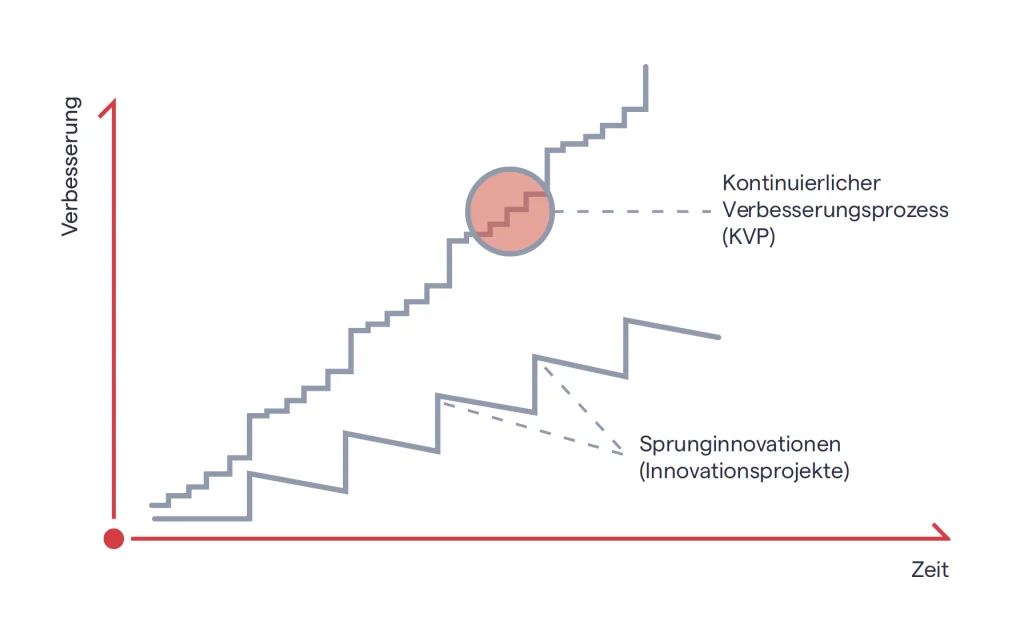
Continuous improvement process vs. leap innovations
Innovation leaps are also more error-prone and take longer to achieve optimal performance. This is where continuous improvement (CIP) helps eliminate errors. The performance of the leap innovation or "disruptive innovation" can thus be optimized and increased more quickly.
The continuous improvement process (CIP) is a systematic approach to the continuous improvement of processes, products and services in a company. CIP can follow, for example, a Plan-Do-Check-Act (PDCA) cycle consisting of the following four steps:
CIP is a continuous process that is always repeated and must respond to new challenges and changes in the company.Through CIP, companies can continuously improve their processes and thereby increase their efficiency, quality and possibly customer satisfaction.
Finally, I would like to emphasize that a linear idealized sequence is hardly possible in the development of complex solutions.Today more than ever, early feedback is needed, ideally from users. Design thinking as a method and thought model has also found its way into our latitudes and is highly agile and user-centric in its approach. The uncompromising involvement of the customers does bring the risk that the degree of innovation may not be as ambitious, but in the end you have solutions that have been developed with the feedback and knowledge of the users. The risk of failure is reduced to a minimum.
"If I had asked the customers, faster horses would have been the solution"
Henry Ford
However, you can of course incorporate other lateral thinkers into the process to increase the degree of innovation. With digital tools and AI, you can live even more agility and creativity, but that will be the focus of the 7th article in this series.
As always, I look forward to feedback and wish you a relaxing and creative Sunday!
Reinhard Willfort, Innovation Doctor www.willfort.at
Note for those interested in innovation: "Running Innovative" Coaching Day. With the unique setup "Running Innovative" (also hiking) we combine mental and physical activity to generate new goals and ideas for you and/or your company together. https://willfort.at/#Laufend-Innovativ



